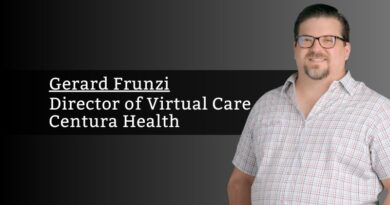Virtual Health – More Than Just Technology
By Kathi Cox, SVP, Integrated Experience, Texas Health Resources
Can you think of a health system whose virtual health strategy was not escalated due to the pandemic? Many of us were planning a long-term strategy to introduce telemedicine tools, and then the world changed. The three- to five-year plan was reduced to a two- to three-week implementation, and the race began.
Providing virtual visits for our employed physician organization was an obvious need, but within our Hospital Channel, the needs varied. We needed to accommodate birthing classes, cardiac rehab, joint camp, and diabetes education, among many others. Each use case had different requirements, including revenue cycle implications. We discovered quickly that there was not one solution for each circumstance, but the fewest solutions necessary to solve the needs identified were certainly preferred.
I’m very proud of our organization’s ability to pull things together so quickly for our care providers and consumers. We not only were able to address the use cases previously mentioned but were able to provide services such as inpatient virtual rounding and patient visitation. Our solutions provided a continuity of care to our patients as well as tools for our providers that jetted virtual health to the top of the priorities pile for our integrated delivery network.
Through this, we saw physicians who swore they would never use telemedicine embrace the technology so they could continue to connect with their patients. Patients, appreciative to have the opportunity to safely see their physician and continue their care, were willing to use the tools available to them. Overall, this was a success during a worldwide pandemic.
Every patient is different in not only what technology they can access, but also in their knowledge of how to use it.
The focus for these use cases was primarily on the technology. The question “What would be the easiest technology for consumers and providers to use?” guided us in our haste to stand something up. However, we learned that providers, whether they were physicians, nurses, or educators, attempted to recreate an in-person experience with technology. This was like placing a square peg in a round hole. The two types of interactions are not at all the same for the provider or the patient.
One challenge we faced early on when considering Hospital Channel virtual options was that many service lines were requesting a virtual option to keep their providers productive and their patients connected. However, not every service line needed a virtual option or could do their work virtually. We had to quickly develop an approval process in collaboration with our Revenue Cycle team to review each request to determine if the use case was something we could/should provide virtually before we offered the options to our patients.
In my experience with implementing information systems, end-user training consists mostly of teaching how to access it, what inputs (e.g., documentation, data entry) are necessary, and tips on how to efficiently leverage the tool. Virtual care has an added component that makes its utilization more complex —visual interaction with the patient, where both parties are end-users. This complexity provided numerous challenges that had to be worked through.
Over the past 24 months, most people have become much more comfortable with online calls and meetings. However, even those of us who do these types of interactions regularly still struggle. We talk over each other or stay on mute, our cameras are askew, and technology isn’t always on our side. People constantly are dropped out of a conversation for no apparent reason.
Telemedicine is even harder because patients are having a personal conversation about their medical condition over the airwaves. They may not be accustomed to using a device to converse on a regular basis and are probably anxious. Add a clinician who is trying to balance the use of the technology with the conversation they are having with their patient, as well as simultaneously completing documentation, and you have a recipe for a disastrous experience.
When providing patient education, one must consider both the educator and the student. Demonstrating the proper way to negotiate stairs to a patient who will be having a knee replacement in a virtual format in which the patient can ask questions requires a skillset that our clinicians don’t innately possess. We weren’t prepared for the challenges of having the right equipment to provide a useful session for the patient to encourage their engagement.
Technology is also challenging for patients. Every patient is different in not only what technology they can access, but also in their knowledge of how to use it. “Tipsheets” were helpful, but with everyone learning at the same time, there was frustration on both sides to start.
Fortunately, our organization was able to measure patient satisfaction with the virtual experiences from the very beginning. This meant that not only could we measure how effective the tools were for the patient, but we were able to glean their struggles in real-time, so we could continually improve.
The hospital outpatient virtual use cases showed the greatest opportunities for enhancement. They highlighted some services that we had never considered providing in a virtual manner that were very successful and valuable to our patients. We also were able to identify the physicians who were able to adapt easily to a virtual experience and the ones who struggled.
| Use Case | Number of Respondents | Overall NPS |
| Employed Physician Organization | 75,681 | 91 |
| Hospital Outpatient | 1,090 | 87.8 |
There is an opportunity here to help providers become as comfortable with their ability to provide good care with telemedicine as they are at providing it in person. Training on how to conduct a virtual visit must be part of the initial user training when introducing the technology. Additionally, simulation and observation must be used along the way to help providers master the skillset. The connection between provider and patient is one that can determine how engaged the patient is with their health and well-being. If telemedicine is the wave of the future, this skill must be part of the ongoing competencies that are required for providers to help ensure long-term success.



